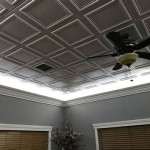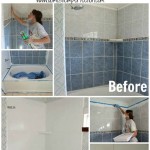Do Bathrooms Need a Vent Pipe in Germany?
The question of whether bathrooms in Germany require a vent pipe is not a simple yes or no answer. The requirement is nuanced and depends on several factors, including the specific building codes, the connection to the public sewer system, and the individual design of the plumbing system within the building. Generally, vent pipes, also known as ventilation stacks or Entlüftungsleitungen in German, are crucial components of a functional and safe plumbing system in Germany, as in most developed countries.
The primary function of a vent pipe is to allow air to enter the drainage system, preventing a vacuum from forming when water drains away. This vacuum can siphon water out of the P-traps (Geruchsverschlüsse) under sinks, toilets, and showers, leading to unpleasant sewer odors entering the building and circumventing the intended function of preventing sewer gases from entering the living space. In addition, proper venting ensures that wastewater flows smoothly and efficiently through the drainage system, reducing the risk of blockages and backups.
German building codes (Bauordnungen) and DIN standards (Deutsches Institut für Normung - German Institute for Standardization) address plumbing system requirements, including ventilation. While the specific details may vary slightly between different Bundesländer (federal states) and municipalities, the overarching principles remain consistent. These regulations emphasize the importance of preventing sewer gases from entering occupied spaces and ensuring the proper functioning of the drainage system. Therefore, proper ventilation is a cornerstone of these codes.
The absence of adequate ventilation can lead to several problems beyond unpleasant odors. Sewer gases, which are primarily composed of methane, hydrogen sulfide, and ammonia, can be hazardous to health in high concentrations. Methane is flammable and can pose an explosion risk. Hydrogen sulfide, even in low concentrations, can cause irritation to the eyes, nose, and throat. Prolonged exposure to sewer gases can lead to more serious health issues. Moreover, inadequate ventilation can result in slow drainage, gurgling sounds from drains, and premature deterioration of plumbing fixtures and pipes.
Different types of venting systems can be employed in German plumbing installations. The most common type is the individual vent, where each fixture is directly connected to a vent pipe that extends to the roof. This provides the most reliable ventilation and is typically required for fixtures located far from the main vent stack. Another type is the common vent, where two fixtures share a single vent pipe. This is often used for fixtures that are located close together, such as two sinks in a bathroom. A third option is the wet vent, where a drain pipe also serves as a vent. This type of venting system is typically allowed only under certain conditions and must meet specific requirements to ensure adequate ventilation. The specific type of venting system used will depend on the layout of the bathroom and the overall plumbing system design.
The Role of DIN Standards in Bathroom Venting
DIN standards play a crucial role in defining the requirements for plumbing systems in Germany, including bathroom venting. These standards provide detailed specifications for the design, installation, and maintenance of vent pipes, ensuring that they meet the necessary performance criteria. For example, DIN 1986-100 (Drainage systems for buildings and properties - Part 100: Specifications for planning and execution), covers aspects of drainage systems including venting requirements. These standards specify the minimum diameter of vent pipes, the maximum distance between fixtures and vent pipes, and the required slope of vent pipes to prevent condensation from accumulating.
Compliance with DIN standards is not merely a suggestion; it is often a legal requirement. Building inspectors will verify compliance with these standards during inspections to ensure that the plumbing system is safe and functional. Failure to comply with DIN standards can result in fines and the requirement to make costly repairs. Therefore, it is essential for plumbers and building owners to be familiar with the relevant DIN standards and to ensure that their plumbing installations comply with these standards.
These standards are regularly updated to reflect advances in plumbing technology and to address emerging issues related to water conservation, energy efficiency, and environmental protection. Staying abreast of these updates is critical for ensuring that plumbing systems are designed and installed in accordance with the latest best practices. For instance, recent updates have focused on optimizing vent pipe sizing to reduce water consumption and minimize the risk of backflow.
The application of DIN standards often necessitates a professional approach to plumbing design and installation. Qualified plumbers in Germany are trained to interpret and apply these standards correctly, ensuring that the venting system meets all the necessary requirements. Moreover, they can provide expert advice on selecting the most appropriate venting system for a particular bathroom layout and plumbing configuration.
Impact of Building Codes on Venting Requirements
German building codes, specifically the Landesbauordnungen (state building regulations), also significantly impact bathroom venting requirements. While the federal government sets the overall framework for building regulations, each Bundesland has the authority to enact its own building codes. These codes typically incorporate or reference DIN standards, but they may also include additional requirements specific to the local context. This means that the specific venting requirements for a bathroom may vary slightly depending on the location of the building.
These building codes emphasize the importance of preventing sewer gases from entering occupied spaces. They typically require that all plumbing fixtures connected to the public sewer system be properly vented to prevent the siphoning of trap seals and the release of sewer gases. The codes may also specify the types of venting systems that are permitted, as well as the minimum size and slope of vent pipes. Furthermore, they often address the location of vent pipes relative to windows, doors, and air intakes to prevent sewer gases from being drawn into the building.
Building permits are often required for plumbing installations, including bathroom renovations that involve changes to the venting system. The permit application process typically involves submitting detailed plans and specifications for the proposed plumbing work, which must demonstrate compliance with the applicable building codes and DIN standards. Building inspectors will review these plans and conduct on-site inspections to ensure that the work is carried out in accordance with the approved plans and the relevant regulations.
Non-compliance with building codes can result in significant penalties, including fines, stop-work orders, and the requirement to make costly repairs. In some cases, building owners may even be held liable for damages caused by faulty plumbing installations. Therefore, it is crucial to ensure that all plumbing work is performed by qualified professionals who are familiar with the applicable building codes and DIN standards.
Alternatives and Exceptions to Traditional Venting
While traditional venting systems are the most common and reliable method for ventilating bathroom plumbing in Germany, there are certain alternatives and exceptions that may be permitted under specific circumstances. These alternatives are often used in situations where traditional venting is impractical or impossible due to architectural constraints or other limitations.
One alternative is the use of air admittance valves (AAVs), also known as automatic aerators or Belüftungsventile in German. AAVs are one-way valves that allow air to enter the drainage system when a vacuum is detected, but prevent sewer gases from escaping. They can be used to vent individual fixtures or entire sections of the plumbing system. However, AAVs are typically not permitted as a substitute for a main vent stack, and their use may be restricted to specific situations where traditional venting is not feasible.
Another exception may apply to buildings connected to a modern, well-maintained public sewer system with adequate ventilation. In some cases, the local building authority may waive the requirement for individual venting of fixtures if it can be demonstrated that the public sewer system provides sufficient ventilation to prevent the siphoning of trap seals. However, this is typically only permitted in specific circumstances and requires a thorough assessment of the sewer system's capacity and performance.
Furthermore, certain specialized plumbing fixtures, such as composting toilets, may not require traditional venting systems. These fixtures are designed to operate without water and do not produce the same type of sewer gases as traditional toilets. However, the use of such fixtures may be subject to specific regulations and may require approval from the local building authority.
It is important to note that any deviation from traditional venting requirements must be carefully considered and approved by the local building authority. A qualified plumbing engineer should be consulted to assess the feasibility and safety of alternative venting solutions and to ensure that they comply with all applicable regulations. The decision to use an alternative venting system should be based on a thorough analysis of the specific circumstances and a clear understanding of the potential risks and benefits.
In summary, while bathrooms in Germany generally require a vent pipe to ensure proper drainage and prevent the release of sewer gases, the specific requirements can vary depending on the building codes, DIN standards, and the individual design of the plumbing system. Alternatives like AAVs may be permitted under certain circumstances, but these require careful consideration and approval from the local building authority. Consulting with qualified plumbers and building engineers is crucial to ensure compliance with all applicable regulations and to design a safe and functional plumbing system.

Plumbing Vent Diagrams Tips Can Help You Plan Your Remodel

10 Peculiar Things About The German Lifestyle That Will Astonish Any Visitor Bright Side

Bathrooms Basics 6 Tips To Plan Your Bathroom Plumbing And Layout Archdaily
Why Did Or Do Toilet Bowls In Germany Have A Level Area Them Quora

Dallmer The Right Trick For Effective Pipe Ventilation Pop Up My Bathroom

What Is The Bathroom Sink Plumbing Rough In Heights

Fixing A Gurgling Toilet How To Guide Forbes Home

The Ultimate Guide To Bathroom Plumbing Diagrams And Layouts

Bathrooms Basics 6 Tips To Plan Your Bathroom Plumbing And Layout Archdaily
Related Posts







